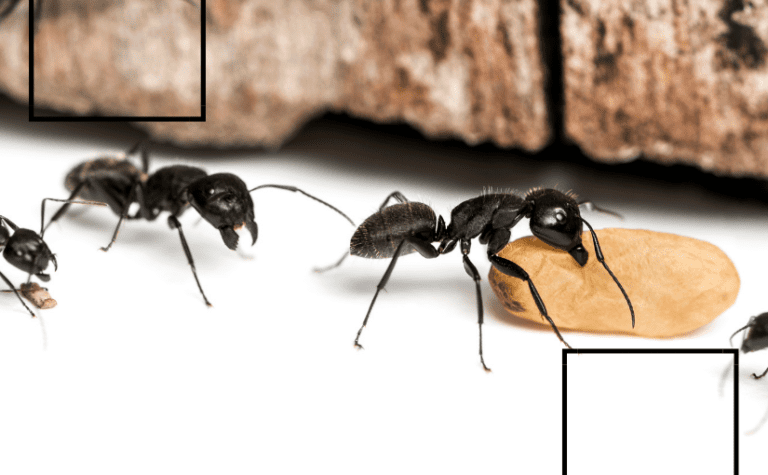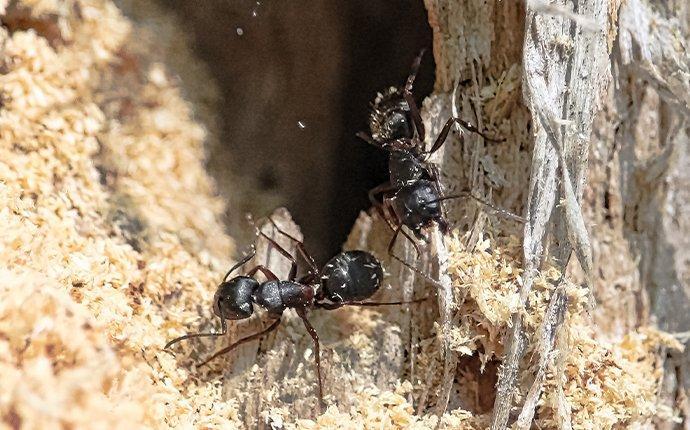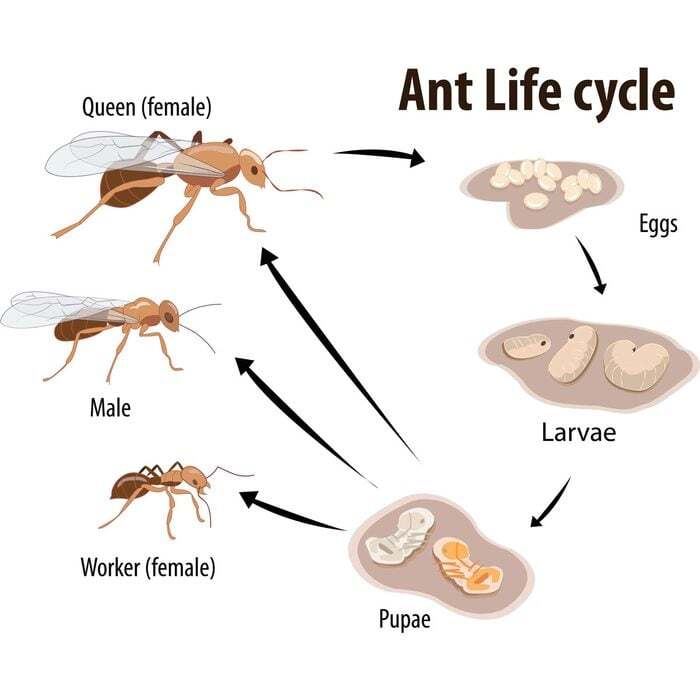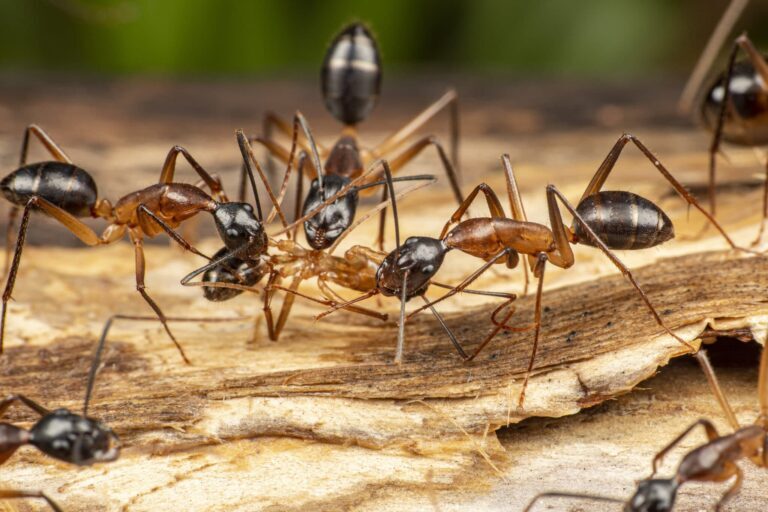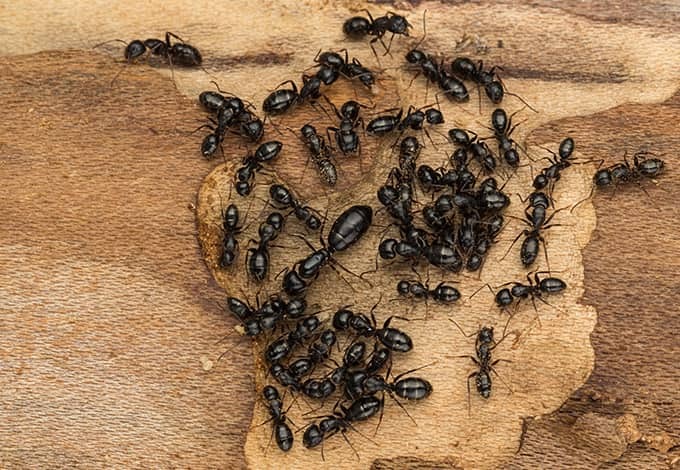Carpenter Ants in Firewood: How to Avoid Bringing Them Indoors
Introduction
What are carpenter ants?
Carpenter ants are large ants that are commonly found in forests and wooded areas. They are known for their ability to excavate wood, creating tunnels and galleries for nesting purposes. Unlike termites, carpenter ants do not eat wood but rather hollow it out to build their nests. These ants are typically black or dark brown in color and can range in size from ¼ to ½ inch long. Carpenter ants are attracted to moist and decaying wood, making firewood piles an ideal habitat for them. It is important to understand their behavior and take necessary precautions to prevent bringing them indoors when dealing with firewood.
Why are carpenter ants attracted to firewood?
Carpenter ants are naturally drawn to firewood due to its ideal conditions for nesting and survival. Firewood provides a moist and decaying environment, which is highly appealing to these ants. Additionally, firewood often contains cracks and crevices that serve as perfect entry points for carpenter ants to establish their colonies. The ants are also attracted to the cellulose present in the wood, which they use as a food source. Therefore, it is crucial to understand why carpenter ants are attracted to firewood in order to effectively prevent their entry into our homes.
The problem with bringing carpenter ants indoors
The problem with bringing carpenter ants indoors is that they can cause significant damage to your home. These ants are known for their ability to tunnel through wood, and if they infest your firewood, they can easily make their way into your house. Once inside, they can establish satellite colonies and continue to wreak havoc on the structural integrity of your property. Carpenter ants can chew through wooden beams, furniture, and even insulation, leading to costly repairs and potential safety hazards. Therefore, it is crucial to take preventive measures to avoid bringing these destructive pests indoors.
Identifying Carpenter Ants
Physical characteristics of carpenter ants
Physical characteristics of carpenter ants play a crucial role in identifying and distinguishing them from other ant species. These ants are typically larger in size, ranging from 6 to 25 millimeters in length, and can vary in color from black to reddish-brown. One notable feature of carpenter ants is their well-developed mandibles, which they use to excavate wood and create nesting galleries. These mandibles are strong and capable of causing damage to wooden structures. Additionally, carpenter ants have a segmented body with a narrow waist, elbowed antennae, and six legs. Understanding these physical characteristics is essential for effective identification and prevention of carpenter ant infestations in firewood, ultimately helping to avoid the risk of bringing them indoors.
Signs of carpenter ant infestation
Signs of carpenter ant infestation can vary depending on the severity and duration of the problem. One of the most common signs is the presence of large, winged ants inside or around your home, particularly during the spring and summer months. These winged ants are known as swarmers and are responsible for starting new colonies. Additionally, you may notice small piles of sawdust-like material, known as frass, near wooden structures or firewood piles. This frass is a result of the ants excavating galleries and tunnels within the wood. Other signs include rustling or tapping sounds coming from within walls or wooden structures, as well as the presence of small holes or tunnels in wooden surfaces. If you notice any of these signs, it is important to take immediate action to prevent further damage and potential infestation spread.
Differences between carpenter ants and termites
Differences between carpenter ants and termites
While both carpenter ants and termites are wood-destroying insects, there are several key differences that can help homeowners distinguish between the two. Firstly, their physical appearance varies significantly. Carpenter ants have a narrow waist and elbowed antennae, while termites have a broad waist and straight antennae. Additionally, carpenter ants have dark-colored bodies, while termites are usually pale or translucent. Another distinguishing factor is their behavior. Carpenter ants excavate wood to create nesting galleries, leaving behind smooth, clean tunnels. In contrast, termites consume wood as their primary food source, resulting in damaged wood that appears hollowed out and filled with soil or mud. Understanding these differences is crucial for homeowners to accurately identify the pest infestation and take appropriate measures to address the issue effectively.
Preventing Carpenter Ant Infestation
Inspecting firewood for signs of carpenter ants
Inspecting firewood for signs of carpenter ants is an essential step in preventing these destructive pests from infiltrating your home. Begin by carefully examining the exterior of the firewood for any visible signs of carpenter ant activity. Look for small holes or tunnels on the surface, which are often an indication of their presence. Additionally, check for sawdust-like material known as frass, which carpenter ants typically leave behind as they excavate galleries within the wood. It is also important to inspect the surrounding area for any ant trails or nests near the firewood pile. By thoroughly inspecting your firewood, you can identify and address any potential carpenter ant issues before bringing it indoors, ensuring a pest-free environment.
Storing firewood properly to deter carpenter ants
Storing firewood properly is essential in preventing carpenter ants from infiltrating your home. To deter these destructive insects, it is crucial to keep firewood elevated and away from direct contact with the ground. This helps to minimize the chances of carpenter ants nesting in the woodpile. Additionally, ensure that the firewood is stacked in a well-ventilated area, preferably under a roof or tarp to protect it from moisture. Regularly inspect the woodpile for signs of carpenter ants, such as small holes or sawdust-like debris, and promptly remove any infested logs. By following these precautions, you can significantly reduce the risk of bringing carpenter ants indoors with your firewood.
Treating firewood to eliminate carpenter ants
Treating firewood to eliminate carpenter ants is crucial in preventing these destructive pests from infesting your home. One effective method is to kiln-dry the firewood, as the high temperatures used during this process can kill any carpenter ants or their eggs present in the wood. Another option is to heat-treat the firewood by placing it in a large oven or kiln at a temperature of at least 140°F (60°C) for 30 minutes. This method ensures that all stages of the carpenter ant life cycle are eradicated. Additionally, applying an insecticide specifically designed for carpenter ants to the firewood can provide an extra layer of protection. It is important to carefully follow the instructions provided by the manufacturer when using any insecticide. By taking these preventive measures, you can enjoy your firewood without the worry of bringing carpenter ants indoors.
Safe Handling and Transportation of Firewood
Using clean containers for firewood transportation
Using clean containers for firewood transportation is an effective way to prevent carpenter ants from being brought indoors. When gathering firewood, it is important to use containers that are free from any debris or insects. This can include plastic bins, sturdy bags, or even a tarp that can be securely wrapped around the firewood. By using clean containers, you can ensure that any carpenter ants or their eggs that may be hiding in the firewood are not able to escape and infest your home. Additionally, regularly cleaning and inspecting these containers before each use will help to maintain their cleanliness and prevent any accidental transportation of pests.
Covering firewood during transportation
Covering firewood during transportation is an essential step in preventing carpenter ants from infiltrating your home. These resilient insects are known to nest in firewood, making it crucial to take precautions when moving it from one location to another. By securely covering the firewood with a tarp or plastic sheet, you create a barrier that prevents carpenter ants from accessing the wood and potentially hitching a ride into your living space. Additionally, covering the firewood helps to keep it dry, reducing the risk of rot and mold growth. Remember to tightly secure the covering to ensure no gaps are left for the ants to squeeze through. Taking this simple yet effective measure will help safeguard your home against the intrusion of carpenter ants and maintain the integrity of your firewood.
Avoiding contact with the ground when storing firewood
When it comes to storing firewood and avoiding contact with the ground, there are a few key steps you can take to prevent carpenter ants from infiltrating your indoor spaces. Firstly, it is important to elevate the firewood off the ground by using a sturdy, raised platform or pallets. This will create a barrier between the wood and the ground, making it harder for carpenter ants to access the firewood. Additionally, ensure that the firewood is stored in a dry and well-ventilated area, as moisture attracts these pests. Regularly inspect the storage area for any signs of carpenter ants or their nests, such as sawdust or small holes in the wood. By implementing these preventive measures, you can significantly reduce the risk of bringing carpenter ants indoors with your firewood.
Dealing with Infested Firewood
Identifying signs of carpenter ant infestation in firewood
Identifying signs of carpenter ant infestation in firewood can help prevent the inadvertent introduction of these pests into your home. One common indication is the presence of small, round openings on the surface of the firewood. These openings are known as “kick-out holes” and are created by carpenter ants as they excavate galleries within the wood. Additionally, you may notice piles of sawdust-like material, known as frass, near the firewood. This frass is a byproduct of the ants’ tunneling activities and can serve as a clear sign of infestation. It is also important to inspect the firewood for live ants or their discarded wings, as these can be further evidence of an infestation. By being vigilant and recognizing these signs, you can take appropriate measures to avoid bringing carpenter ants indoors with your firewood.
Disposing of infested firewood properly
Disposing of infested firewood properly is crucial to prevent the spread of carpenter ants into your home. If you discover that your firewood is infested, it is important not to simply discard it near your house or in your yard. Instead, the best course of action is to burn the infested wood as soon as possible. This will effectively eliminate any carpenter ants or their eggs that may be hiding within the logs. If burning the wood is not an option, you should contact your local waste management facility or a professional pest control service to inquire about proper disposal methods. Remember, taking the necessary steps to dispose of infested firewood responsibly will help safeguard your home from potential carpenter ant infestations.
Treating infested firewood to prevent further spread
Treating infested firewood is crucial in preventing the further spread of carpenter ants indoors. One effective method is to kiln-dry the firewood. This process involves heating the wood to a high temperature, typically around 140°F (60°C), for several hours. The heat kills any carpenter ants, their eggs, and larvae present in the wood, ensuring that they do not survive to infest your home. Additionally, kiln-drying also removes excess moisture from the firewood, making it less attractive to carpenter ants in the first place. It is important to note that kiln-drying should be done by professionals, as it requires specialized equipment and knowledge to ensure the wood is properly treated. By taking these preventive measures, you can significantly reduce the risk of bringing carpenter ants indoors with your firewood.
Professional Pest Control for Carpenter Ants
When to seek professional help for carpenter ant infestation
When to seek professional help for carpenter ant infestation
While there are several DIY methods to control carpenter ant infestations, there are certain situations where it is advisable to seek professional help. If the infestation is extensive, with large numbers of ants and widespread damage to wooden structures, it is best to call in a professional pest control company. Additionally, if previous attempts to eliminate the infestation have been unsuccessful or if the infestation recurs after treatment, it is important to consult with experts. Professional pest control technicians have the knowledge, experience, and specialized equipment to effectively locate and eradicate carpenter ant colonies, ensuring long-term prevention and protection against further damage.
Choosing a reputable pest control company
When it comes to dealing with carpenter ants in firewood, choosing a reputable pest control company is essential. These professionals have the expertise and knowledge to effectively identify and eliminate carpenter ant infestations, ensuring that your home remains free from these destructive pests. A reputable pest control company will conduct a thorough inspection of your property, provide you with a detailed treatment plan, and use safe and effective methods to eradicate the ants. Additionally, they can offer valuable advice on how to prevent future infestations and help you maintain a pest-free environment. By selecting a trusted pest control company, you can have peace of mind knowing that your home is in capable hands.
Methods used by professionals to eliminate carpenter ants
Methods used by professionals to eliminate carpenter ants vary depending on the severity of the infestation. One commonly employed method is the application of insecticides directly into the affected areas. Professionals may use dust or liquid insecticides that are specifically formulated to target carpenter ants. Another effective technique is the use of bait stations, which contain a toxic substance that the ants carry back to their colony, effectively eliminating the entire population. In some cases, professionals may also employ non-chemical methods such as vacuuming or heat treatments to eradicate carpenter ants. It is important to note that professional assistance should be sought when dealing with a carpenter ant infestation, as they have the expertise and knowledge to effectively eliminate these pests while ensuring the safety of your home.


